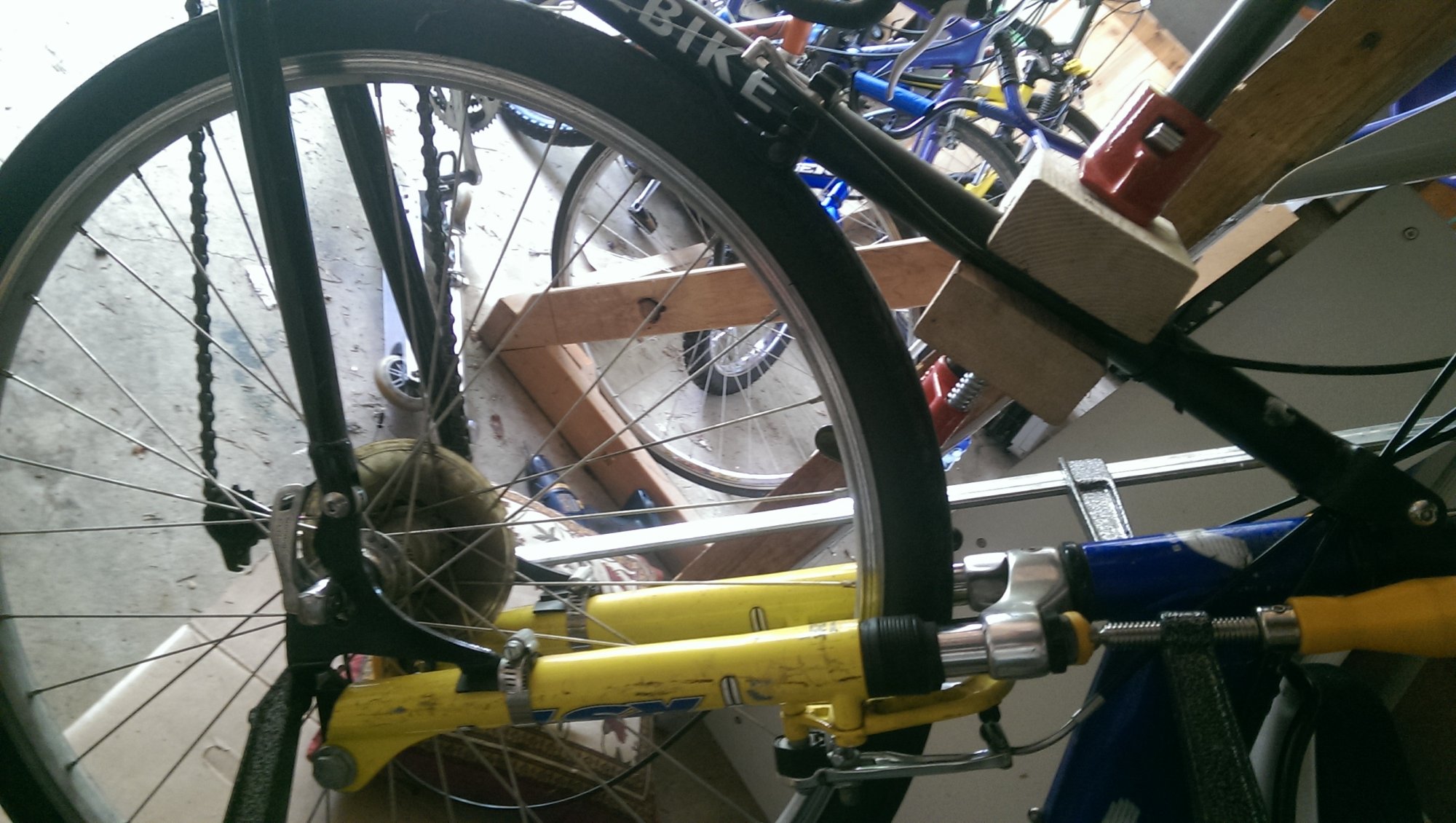If the suspension fork on my conversion takes a good hit, the front downtube will hit the tire, bringing the front of the bike to a sudden stop (which is obviously dangerous). I've tightened up the suspension, which mitigates the problem without solving it. The options I've considered are 1) put some kind of spacer on one of the shocks such that the fork bottoms out early, before the point where the tube hits the wheel. 2) Replace the fork with a rigid one.
Suggestions?
Suggestions?




